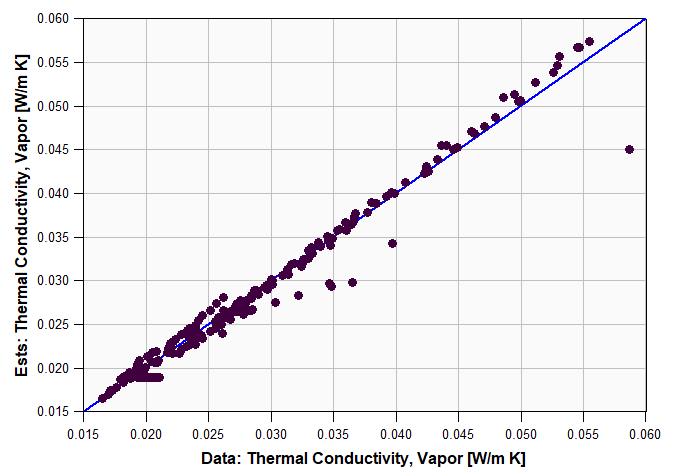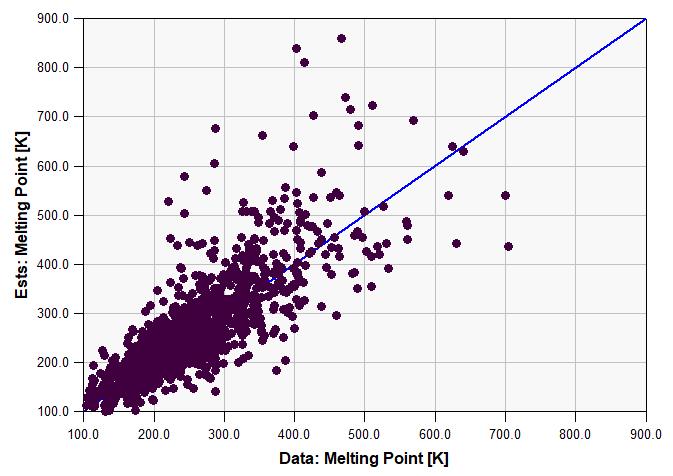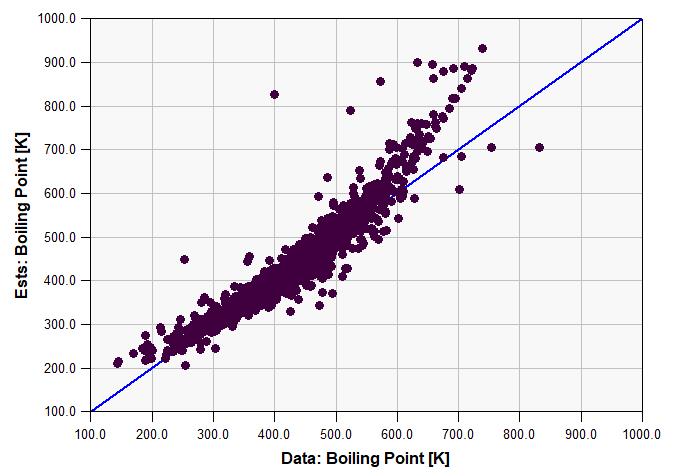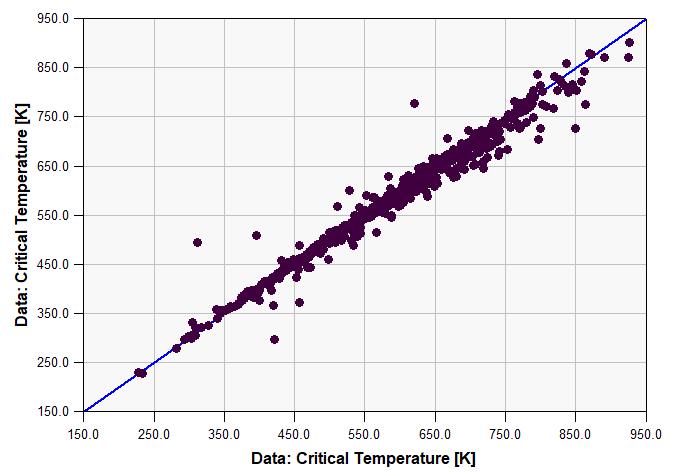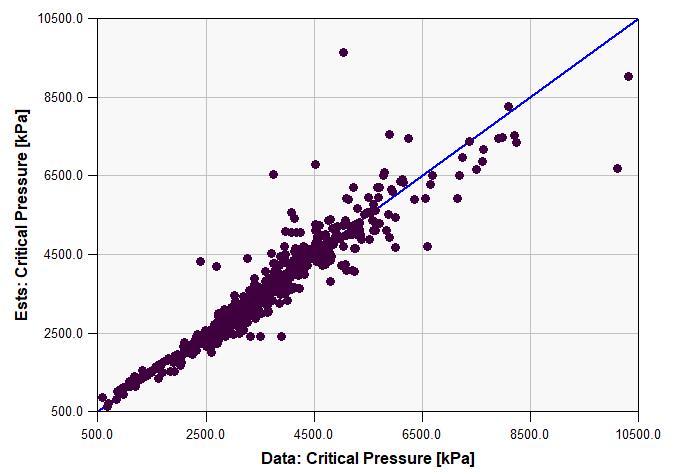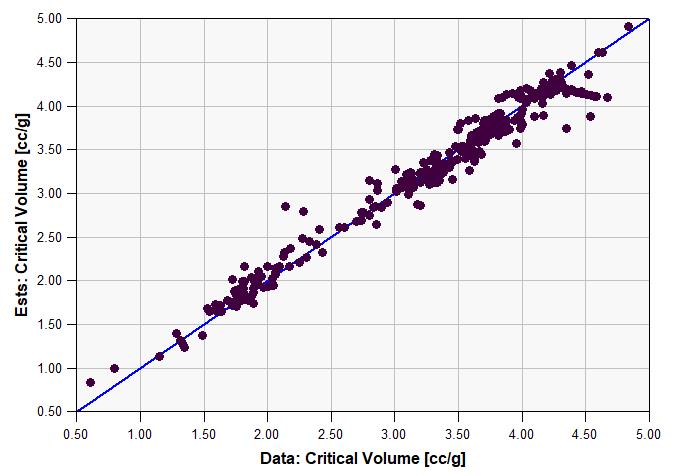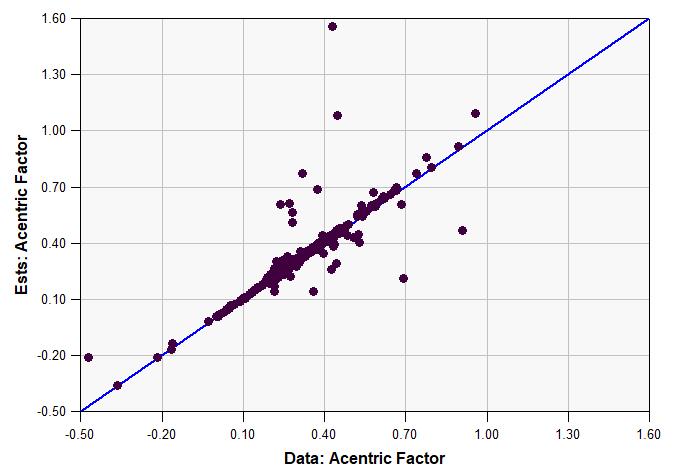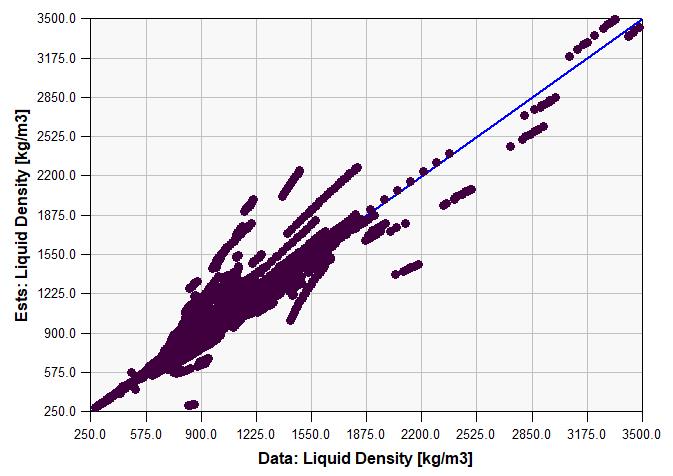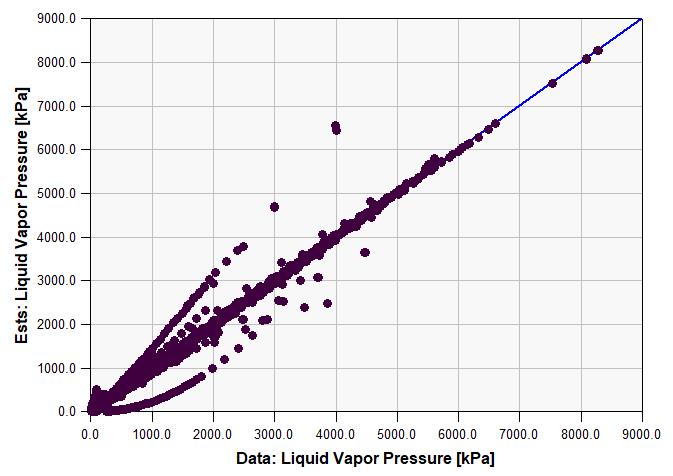There are numerous physical property estimation techniques which accurately predict a chemical's or mixture's physical properties. Two very common type of techniques are group contribution techniques and equation-based techniques. Group contribution estimation techniques begin with a compound's molecular structure. "Contributions" for each group found in the structure are totaled into an estimate. Once several basic properties are estimated by group contribution techniques these estimates can be entered into equation-based techniques for further property estimation.
This webpage provides descriptions and calculation capabilities for a number of commonly used physical properties. For additional physical property estimation capabilities, please try either Cranium or Synapse. Both applications go far beyond this online estimation demonstration enabling you to draw molecular structures, enter your own data and estimation techniques, estimate mixture properties, and create your own knowledge bases.
We are always happy to discuss physical properties. If you have any comments, suggestions, or questions, please contact us.
Group contribution techniques can be used to estimate the physical properties of chemicals when the only information we have is a chemical's molecular structure. They are simple to use and typically fairly accurate. (See our video on group contribution techniques for more details.)
The underlying assumption of a group contribution technique is that each 'part' of a molecule contributions a certain 'amount' to the molecule's physical property. We call these molecular parts 'groups' and these amounts 'contributions'.
Thus the first step in using a group contribution technique is to dissect a molecular structure into groups. Play the video to the right to see the dissection of 1-methoxy-2-propyl acetate into groups with assigned contributions from Joback's boiling point estimation method.
This introductory webpage enables you to manually enter the number of groups which occur within the structure being estimated in the table below. (Our Structure Estimates webpage enables you to draw your molecule's structure.) For example, the molecular structure of 1-butanol is shown in the figure to the right. To estimate properties for 1-butanol you would:
- enter a 1 for the occurrence of "-CH3" groups
- enter a 3 for the occurrence of "-CH2-" groups
- enter a 1 for the occurrence of "-OH (alcohol)" groups

Use the controls in the table to the right to specify the groups contained within the chemical whose properties you wish to estimate. You can select a chemical from the list below and press the 'Dissect Structure' button to see examples of the groups contained within some common chemicals.
Once you have entered your structure's groups, press the "Estimate Properties" button and scroll the screen downward to examine estimated property values. Press the "Clear Occurrences" button to set all group occurrences to zero.
Some of the most basic properties needing to be estimated for pure chemicals are the molecular weight, the melting point, and the normal boiling point. The basic estimation models for these properties are shown in the figure to the right.
- The molecular weight is estimated by its definition - the molecular weight is the sum of the atomic weight of each atom in the molecule.
- The melting point is estimated by Joback's method [1], a group contribution technique. Melting point estimates are not highly accurate - the average absolute percent error is 15.8%.
- The normal boiling point is estimated by Joback's method [1], a group contribution technique. Boiling point estimates have an average absolute percent error of 5.3%.
Click on the report links in the following table for more detailed evaluations of the estimation techniques.
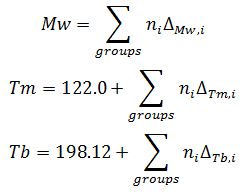
| Property | Technique | Estimated Value | Units | Report |
|---|---|---|---|---|
| Molecular Weight | Definition | - - - | - - - | |
| Melting Point | Joback Method | K | ||
| Boiling Point | Joback Method | K |
The critical properties are used to define the chemical's liquid and vapor region. They are also used in many other estimation techniques. The estimation models for the critical properties are shown in the figure to the right.
- The critical temperature is estimation by Joback's method [1], a group contribution technique. The boiling point is also a required input. (The previously estimated boiling point will be used in this model.) Critical temperature estimates have an average absolute percent error of 2.2%.
- The critical pressure is estimated by Lydersen's method [3], a group contribution technique. The molecular weight is also a required input. (The previously estimated boiling point will be used in this model.) Critical pressure estimates have an average absolute percent error of 6.9%.
- The critical volume is estimated by Joback's method [1], a group contribution technique. Critical volume estimates have an average absolute percent error of 3.6%.
- The critical compressibility is estimated using its definition. The critical temperature, critical pressure, and critical volume are required inputs. These values will be obtained from our previous estimates.
Click on the report links in the following table for more detailed evaluations of each estimation technique.
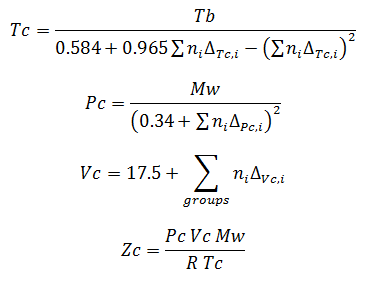
| Property | Technique | Estimated Value | Units | Report |
|---|---|---|---|---|
| Critical Temperature | Joback Method | K | ||
| Critical Pressure | Lydersen Method | kPa | ||
| Critical Volume | Joback Method | m3/kg | ||
| Critical Compressibility | Definition | - - - | - - - | |
| Acentric Factor | Lee-Kesler Equation | - - - |
The liquid density is estimated at several temperatures between the normal boiling point and the critical temperature by the Rackett equation [2]. This technique is an equation-based technique that requires the molecular weight, the critical compressibility, the critical temperature and the critical pressure. These properties are obtained from previously estimated values.
Estimates generated by the Racket equation have an average absolute percent error of 5.7%. See this report for a more detailed evaluation of the technique.

| Temp [K] | Est [kg/m3] | |
|---|---|---|
| 1) | ||
| 2) | ||
| 3) |
| Temp [K] | Est [kg/m3] | |
|---|---|---|
| 4) | ||
| 5) | ||
| 6) |
| Temp [K] | Est [kg/m3] | |
|---|---|---|
| 7) | ||
| 8) | ||
| 9) |
The vapor pressure is estimated at several temperatures ranging from just above the melting point to just below the critical temperature. The Lee-Kesler equation [4] is used to generate estimates. This technique is an equation-based technique that requires the critical temperature, critical pressure, and acentric factor. The acentric factor is found using these same equations with the temperature equal to the boiling point and the vapor pressure equal to 1 atm. The remaining properties are obtained from previously estimated values.
Estimates generated by the Lee-Kesler equation have an average absolute percent error of 12.8%. This technique does not estimate low vapor pressure values well. The error estimate was calculated for estimates greater than 10,000 Pa. See this report for a more detailed evaluation of the technique.
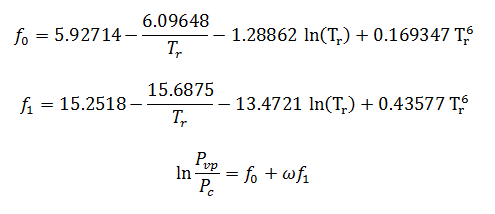
| Temp [K] | Est [kPa] | |
|---|---|---|
| 1) | ||
| 2) | ||
| 3) |
| Temp [K] | Est [kPa] | |
|---|---|---|
| 4) | ||
| 5) | ||
| 6) |
| Temp [K] | Est [kPa] | |
|---|---|---|
| 7) | ||
| 8) | ||
| 9) |
